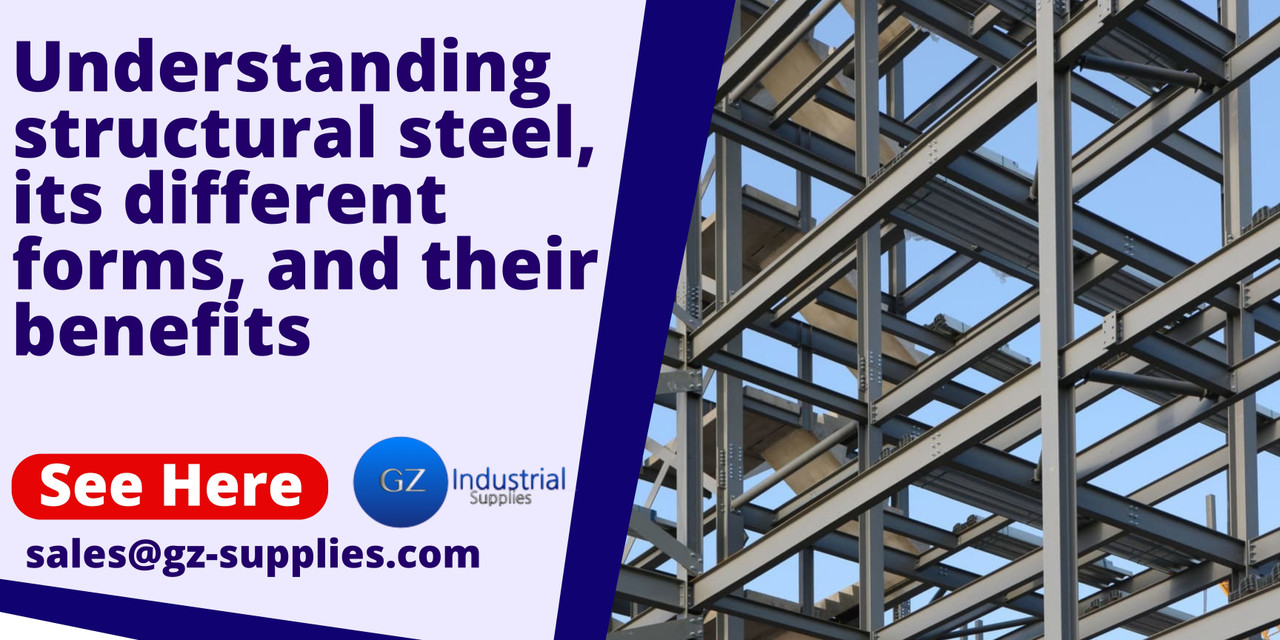Understanding structural steel, its different forms, and their benefits
Understanding structural steel, its different forms, and their benefits
Structural steel is crucial in many construction projects, including buildings, bridges, and other structures. The article discusses the basics of structural steel, its different forms, and its benefits and drawbacks. The article explains the different types of structural steel, including hot-rolled, cold-rolled, pre-painted, and stainless steel, and their unique properties and applications. Additionally, the article explores the benefits of using structural steel, such as its strength, durability, versatility, efficiency, affordability, and drawbacks, including weight, corrosion, and fire safety concerns.
Structural steel is a category used for making construction materials in various shapes. Many structural steel shapes take the form of an elongated beam having a profile of a specific cross-section. Structural steel shapes include angles, beams, channels, tubing, and plates. The different forms of structural steel include carbon steel, alloy steel, and high-strength low-alloy steel. Carbon steel is the most commonly used type of structural steel known for its strength, ductility, and weldability. Alloy steel is made by adding other elements to carbon steel to improve its properties, such as strength, hardness, and corrosion resistance. High-strength low-alloy steel is an alloy with higher strength and better corrosion resistance than carbon steel.
Structural steel is a versatile and durable building material used in various applications, including buildings, bridges, and other structures. Structural steel is made by melting iron and adding carbon, manganese, and other elements to create a robust, durable, and corrosion-resistant material.
There are many different types of structural steel, each with unique properties and applications. Some of the most common types of structural steel include:
- Hot-rolled structural steel: Hot-rolled structural steel is made by rolling heated steel billets through a series of dies to create a desired shape. Hot-rolled structural steel is solid and durable, but it is also relatively heavy.
- Cold-rolled structural steel: Cold-rolled structural steel is made by rolling cold steel sheets through a series of dies to create a desired shape. Cold-rolled structural steel is stronger and more ductile than hot-rolled structural steel but is also more expensive.
- Pre-painted structural steel: Pre-painted structural steel is hot-rolled or cold-rolled structural steel coated with a protective paint finish. Pre-painted structural steel is resistant to corrosion and weathering and requires less maintenance than unpainted structural steel.
- Stainless steel structural steel: Stainless steel structural steel is made by adding chromium to iron to create a material resistant to corrosion. Stainless steel is more expensive than other types of structural steel, but it is also more durable and requires less maintenance.
Benefits of Using Structural Steel
There are many benefits to using structural steel in construction, including:
- Strength: Structural steel is one of the most robust materials available, making it ideal for use in structures that need to support a lot of weight.
- Durability: Structural steel is also very durable and can withstand the elements and other harsh conditions.
- Versatility: Structural steel can create structures, from simple buildings to complex bridges.
- Efficiency: Steel structures are often more efficient to build than other types of structures, such as concrete structures.
- Affordability: Steel is a relatively affordable building material, making it a good option for budget-minded builders.
Drawbacks of Using Structural Steel
There are some drawbacks to using structural steel in construction, including:
- Weight: Structural steel is a relatively heavy material, which can increase the cost of transportation and construction.
- Corrosion: Structural steel is susceptible to corrosion, so it is essential to use protective coatings when corrosion is a concern.
- Fire safety: Structural steel can be flammable, so it is important to take fire safety precautions when using it in construction.
Structural steel is a versatile and durable building material that offers several benefits for construction projects. However, it is essential to be aware of the drawbacks of using structural steel, such as its weight and susceptibility to corrosion, before deciding whether to use it in a project. You can read the comparison of Steel Vs concrete in construction.
Steel vs. Concrete: Which Material Reigns Supreme
Which type of structural steel is best for your project?
The best type of structural steel for your project will depend on several factors, including the size and weight of the structure, the climate in which the structure will be built, and the budget for the project.
If you are building a large, heavy structure, such as a bridge or a high-rise building, you must use a solid and durable type of structural steel, such as hot-rolled structural steel. If you are building a smaller structure, such as a house or a shed, you can use a less expensive type of structural steel, such as cold-rolled structural steel.
If you are building a structure in a coastal or other corrosive environment, you will need to use a type of structural steel resistant to corrosion, such as stainless steel.
Finally, you will need to consider the budget for your project when choosing a type of structural steel. Hot-rolled structural steel is the most affordable type of structural steel, while stainless steel structural steel is the most expensive.
Considering these factors, you can choose the best type of structural steel for your project.
Summary
Structural steel is made by melting iron and adding other elements to create a durable and corrosion-resistant material. The article "Understanding Structural Steel, Different Forms and Their Benefits" discusses the various forms of structural steel, including carbon steel, alloy steel, and high-strength low-alloy steel. Different types of structural steel, such as hot-rolled, cold-rolled, pre-painted, and stainless steel, each with unique properties and applications. The article highlights the benefits of using structural steel in construction, such as strength, durability, versatility, efficiency, and affordability, but also mentions some drawbacks, such as weight, susceptibility to corrosion, and fire safety concerns.
Contact us for a free quote






